Key takeaways:
- User interface (UI) design focuses on enhancing user experience through clarity and simplicity, not just aesthetics.
- First impressions in user experience are vital; confusing interfaces can lead to frustration and decreased user engagement.
- Key principles in UI design include clarity, consistency, and feedback, which collectively foster a positive user experience.
- Tools like Figma, Balsamiq, and usability testing software are essential for developing effective user interfaces and incorporating user feedback into the design process.
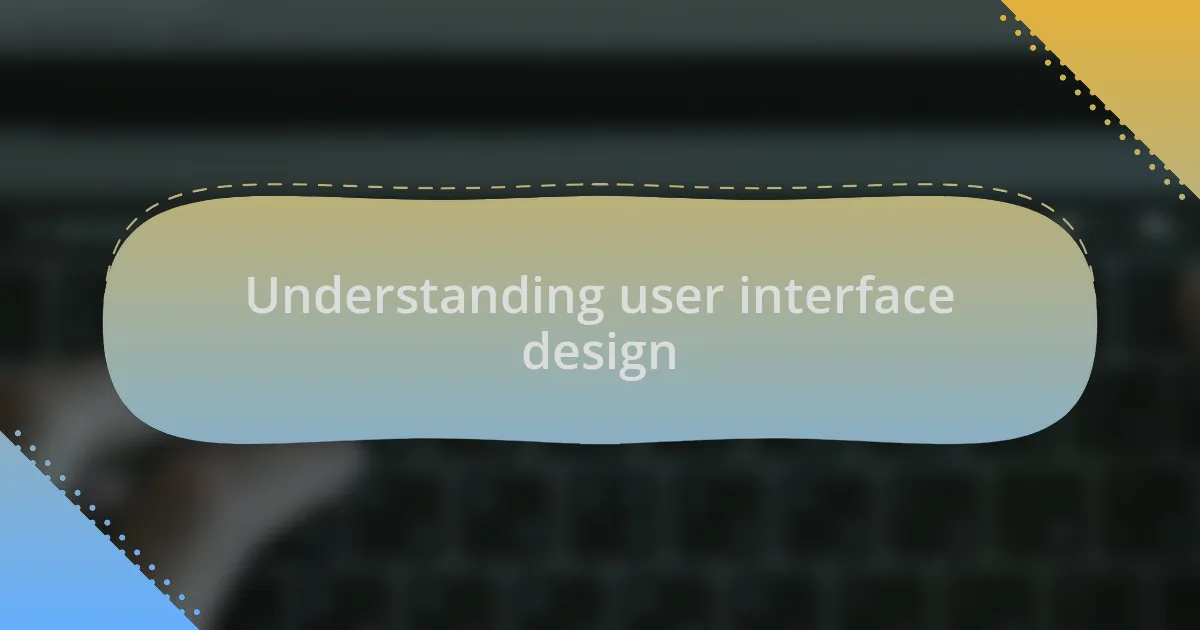
Understanding user interface design
Understanding user interface design begins with recognizing that it’s not just about making things look pretty; it’s about enhancing user experience. I remember a time when I struggled with a website that looked great but was frustrating to navigate. That experience made me realize how critical clarity and simplicity are in UI design.
When designing interfaces, I often ask myself: What do users need? I visualize users’ journeys — how they interact with different elements. This perspective allows me to create interfaces that anticipate challenges and make navigation intuitive. It’s almost like a conversation; if users can’t easily follow along, they’ll quickly lose interest.
I’ve learned that emotions play a significant role in user engagement. For example, when users encounter a friendly interface, they’re more likely to return. It’s about creating a feeling of comfort and familiarity, making the user want to engage further. Ultimately, the goal is to design an interface that resonates with users on both a functional and emotional level.
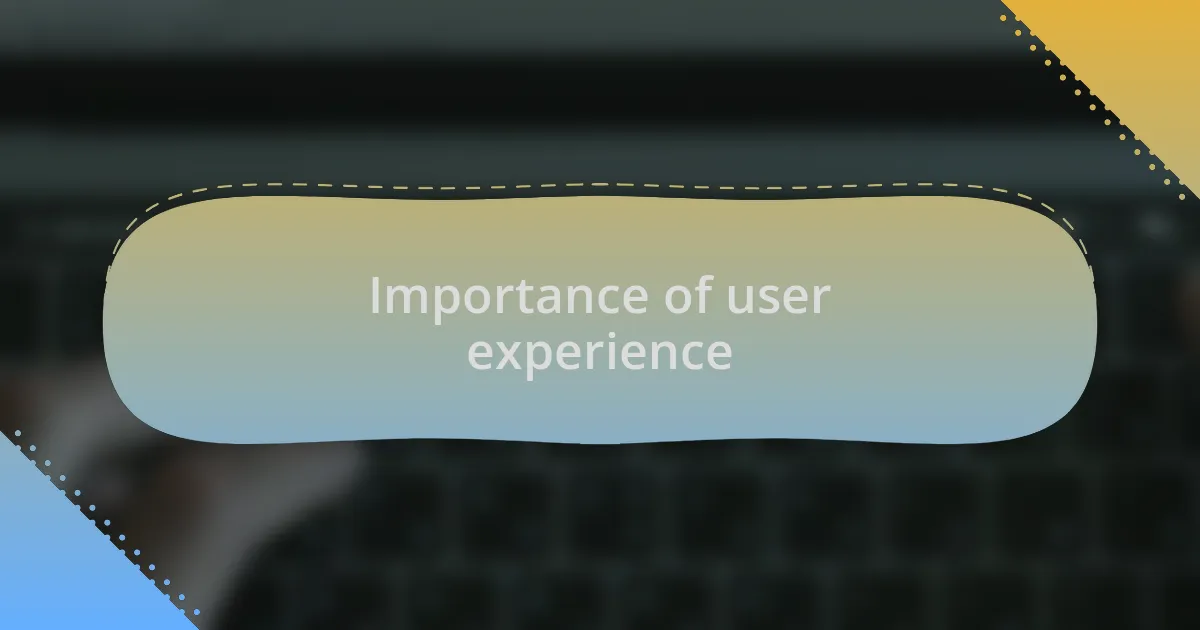
Importance of user experience
When it comes to user experience, I believe that first impressions are vital. I recall launching a new feature on my website and watching user interaction stats closely. Users who found the interface confusing didn’t just click away; they left frustrated comments, sharing how they had missed out on valuable content. It underscored for me that straightforward usability can significantly enhance how users feel about a site, impacting overall engagement and retention.
User experience is like the invisible thread that connects users to your content. I often think about how my own workflow changes when I encounter a seamless interface versus a clunky one. If I land on a site where I can easily find what I need, I not only spend more time exploring but also feel more positive about the brand. This is such an important reminder that a well-thought-out user experience fosters trust and curiosity.
Moreover, the emotional aspect of a positive user experience can’t be overstated. Once, I visited a tutorial site that had a delightful, interactive layout, and I felt as if I was chatting with a knowledgeable friend rather than just browsing a cold, impersonal platform. This sense of connection made me come back for more, proving that investing in user experience isn’t merely an aesthetic choice; it’s a crucial element that can turn a one-time visitor into a loyal user.
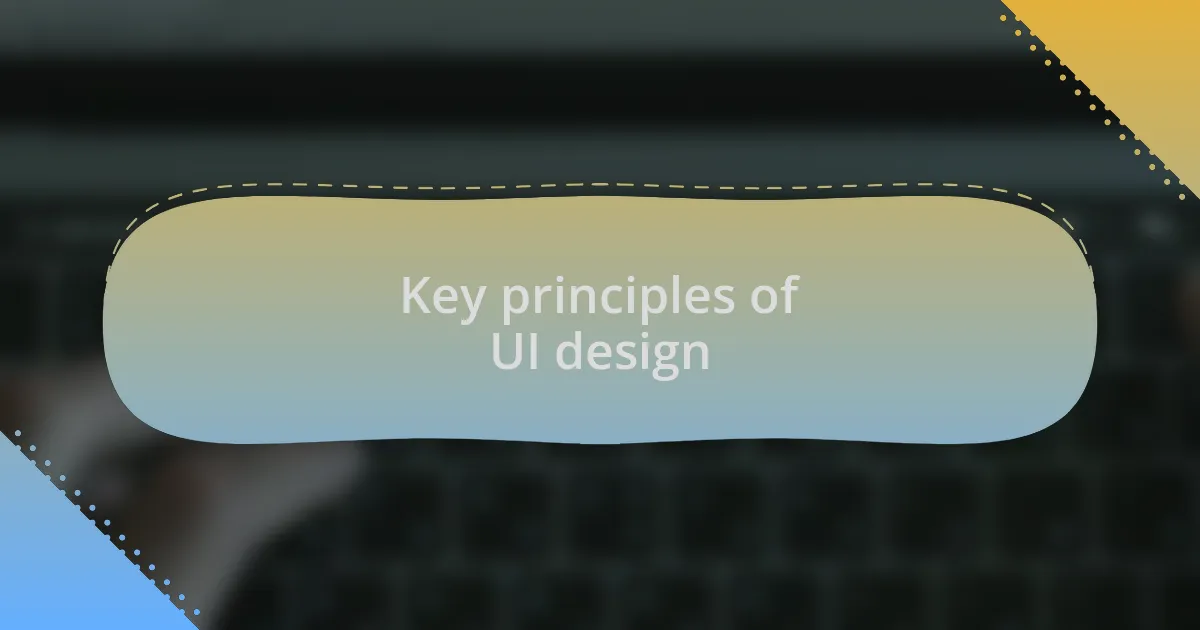
Key principles of UI design
When it comes to user interface (UI) design, clarity is one of the key principles I prioritize. I remember redesigning the navigation of my website, aiming to simplify how users accessed different programming tutorials. By clearly labeling sections and keeping the layout intuitive, I noticed that visitors could find resources faster, which led to an increase in engagement. Isn’t it fascinating how a little clarity can transform visitor behavior?
Consistency is another principle that I find crucial in UI design. I once encountered a site that varied its button styles and fonts across pages, which created a sense of confusion. After that experience, I made it a point to ensure that my website has uniform colors, fonts, and controls. This consistent presentation not only streamlines user interactions but also reinforces the brand identity. Why create barriers when you can create a cohesive experience?
The principle of feedback really resonates with me, too. I recall integrating subtle notifications into my site to inform users when actions were completed, such as successfully submitting a form. Providing users with this kind of feedback reassures them that their interactions are recognized and valued. Have you ever felt lost after clicking a button without any response? I know I have, and it can be quite frustrating. This is why I believe that incorporating immediate feedback in UI design can significantly enhance the user experience.
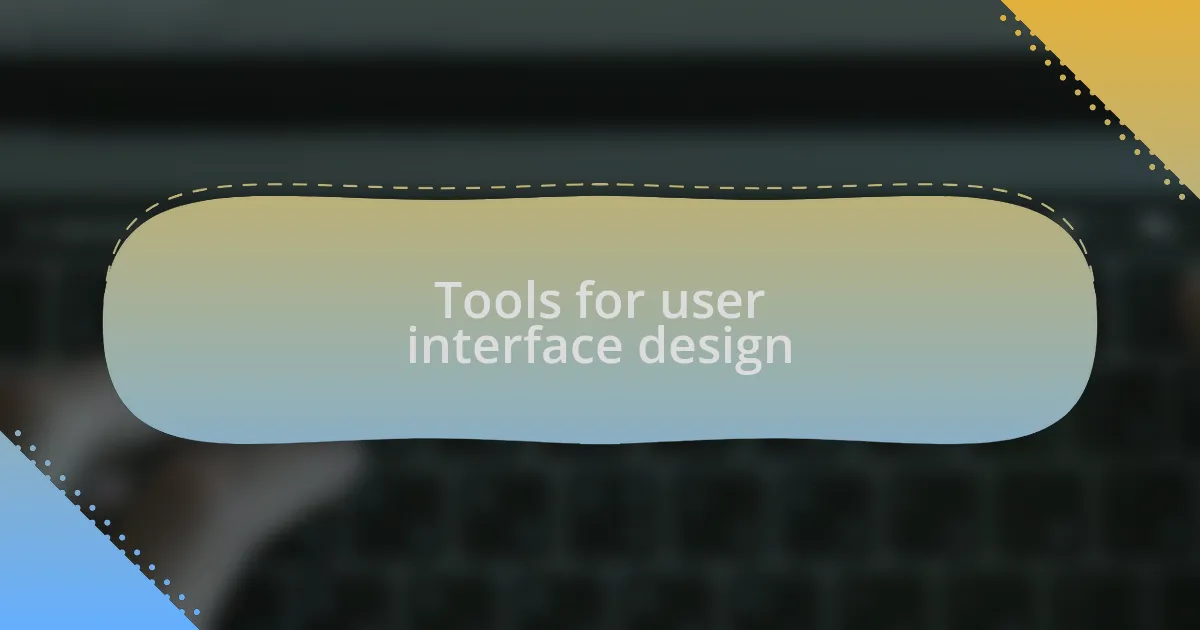
Tools for user interface design
Tools play a vital role in shaping the user interface design process. In my journey, I’ve explored various design tools like Figma and Sketch, which offer intuitive environments for creating prototypes. I remember the thrill of dragging and dropping elements, finding that I could visualize my ideas much quicker than with traditional methods. Does it ever strike you how technology can suddenly make complex tasks feel so effortless?
For wireframing, I often turn to tools like Balsamiq. When I first used it, I loved how it simplified the process of sketching out my ideas without getting bogged down by colors or aesthetics. It’s interesting how starting with a rough outline can spark creativity, enabling me to focus solely on functionality. Have you found that stripping away the design glamour makes it easier to refine the user experience?
I can’t emphasize enough the importance of user testing tools, such as UsabilityHub. I recall running a test for a new feature and was surprised by the insights users provided. They highlighted aspects I hadn’t even considered, ultimately leading to a refined interface that aligned perfectly with user needs. Engaging users in this way not only helps identify issues but also creates a sense of community in the design process. What better way to improve your design than directly involving the people who will use it?
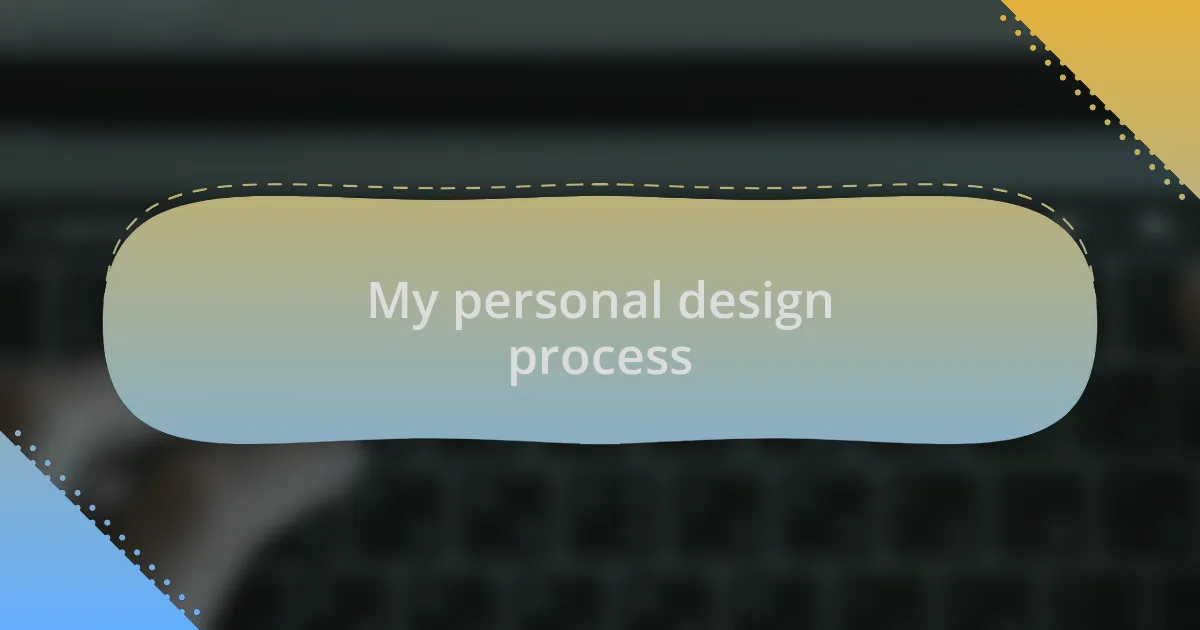
My personal design process
In my personal design process, I start with empathy. I often imagine myself as the end user, which helps me understand their journey. When I redesign layouts, I sometimes pull up my favorite websites and analyze what draws me in. Have you ever paused to think about how certain designs just click with you? That’s the emotional connection I aim to foster in my work.
As I transition from brainstorming to sketching, I find the magic often happens during low-tech moments. I once spent a weekend doodling ideas on a notepad, and I stumbled upon a layout that became the backbone of a major project. There’s something about putting pen to paper that unleashes creativity. Have you experienced that spark of inspiration from a simple sketch? It can transform your entire design vision.
Once I draft my initial designs, the real excitement begins with feedback rounds. I actively engage with colleagues and friends, encouraging them to critique my work honestly. I vividly recall a session where a small comment about button placement drastically changed the user experience for the better. It’s interesting how collaboration can take a design to the next level. How often do we overlook the power of fresh perspectives? They can illuminate paths we hadn’t considered.
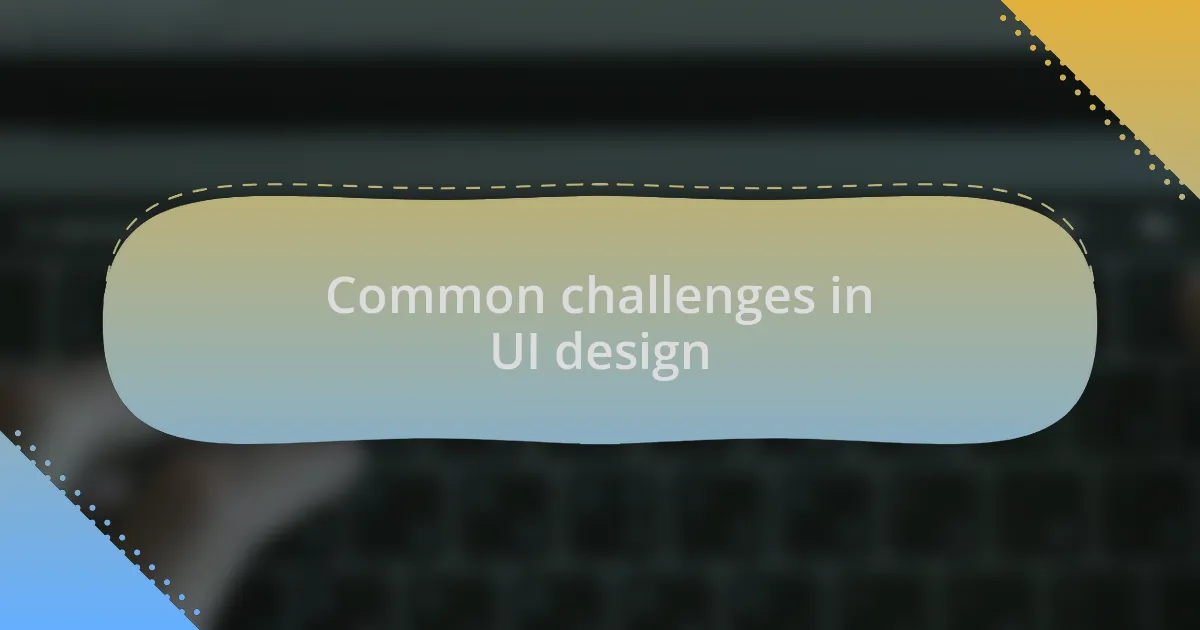
Common challenges in UI design
In the realm of UI design, one recurring challenge is balancing aesthetics with functionality. I once encountered this dilemma while designing a blog interface. The colors and typography looked great, but users struggled to navigate through the content. It made me realize that while a visually stunning design is appealing, it should never overshadow usability. Isn’t it frustrating when something is beautiful but hard to use?
Another significant hurdle is ensuring consistency across different platforms. I vividly remember a project where I designed for both desktop and mobile. While the layout worked seamlessly on one screen, it fell apart on another. This inconsistency can confuse users and damage their trust in the brand. Have you ever felt lost when switching between devices due to a jarring design change? It’s a reminder of how crucial it is to maintain a unified experience.
User feedback often unveils unexpected insights, which can be a double-edged sword. There was a time when I received mixed reactions about a specific feature I passionately believed in. It was disheartening at first, but it pushed me to reassess my design approach. Have you ever had to confront feedback that challenged your ideas? Learning to embrace criticism is key—it can lead to breakthroughs that enhance the user experience significantly.